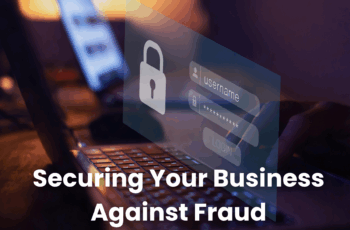
As a business owner, safeguarding your financial assets is
paramount in today’s increasingly digital environment. Fraud can take many
forms, and understanding the common scams that target businesses can help you develop
strategies to protect your assets and maintain your reputation. Here, we
highlight some of the most prevalent fraud scenarios that business owners
should watch out for.
Phishing Scams
Phishing involves impersonating a trustworthy entity to
trick individuals into disclosing sensitive information, such as login
credentials and financial details. Phishing can occur through email, phone
calls, or even text messages (SMS phishing).
Educate employees about recognizing suspicious emails and direct
them to verify the identities of anyone requesting sensitive information. Implementing
multi-factor authentication can also enhance security.
Business Email Compromise
Business Email Compromise schemes are increasingly
sophisticated and typically involve cybercriminals compromising a legitimate
business email account to deploy fraudulent requests for funds. Common tactics
include impersonating a company executive or a trusted vendor.
Train your team to be suspicious of unexpected requests for
wire transfers or sensitive data. Encourage direct confirmation through a known
phone number rather than replying to the email.
Invoice Fraud
Fraudulent invoices can be sent to your business from fake
suppliers or vendors. Scammers often create convincing invoices that mimic
legitimate businesses, leading to unwarranted payments.
Establish a clear verification process for invoices,
including dual approval systems for any payments above a certain amount.
Regularly review vendor records to spot discrepancies.
Identity Theft
Identity theft can occur when a fraudster obtains personal
information about your business, such as tax identification numbers or bank account
details, to open fake accounts or acquire loans.
Secure sensitive documents and information, conduct regular
audits of your accounts, and monitor your business credit report to detect any
unauthorized activity promptly.
Check Fraud
Check fraud can occur in various forms, including counterfeit
checks of using stolen checks to pay for goods and services. Scammers may also
adapt to use remote deposit capture technology to deposit fraudulent checks.
Consider electronic payments or ACH transfers instead of
checks, as they can increase security and reduce the risk of fraud. If you must
use checks, employ security features such as watermarks and color-shifting ink.
Social Engineering
Social engineering is a broader term that describes any
tactic designed to manipulate individuals into revealing confidential
information. Scammers may pose as IT support, requesting sensitive information
to “fix” an issue.
Encourage your team to conduct thorough identity
verification before providing any information. Regular training on social
engineering tactics can empower employees to recognize and resist these
manipulations.
Employee Theft
Unfortunately, not all threats come from outside the
organization. Employee theft can take many forms, including embezzlement,
inventory theft, or unauthorized access to company funds.
Implement internal controls, such as segregating duties and
conducting regular audits, to deter employee theft. Foster a positive workplace
culture where employees feel valued and respected, reducing the likelihood of
internal fraud.
Staying vigilant against fraud is essential for protecting
your business’s financial security. By understanding these common fraud scenarios
and implementing preventative measures, you can significantly reduce the risk
of falling victim to scams. Regular training and awareness initiatives can empower
your team to recognize and address potential threats proactively. If you have
any questions about enhancing your business’s financial security, be sure to
reach out to our Cash Management team.
